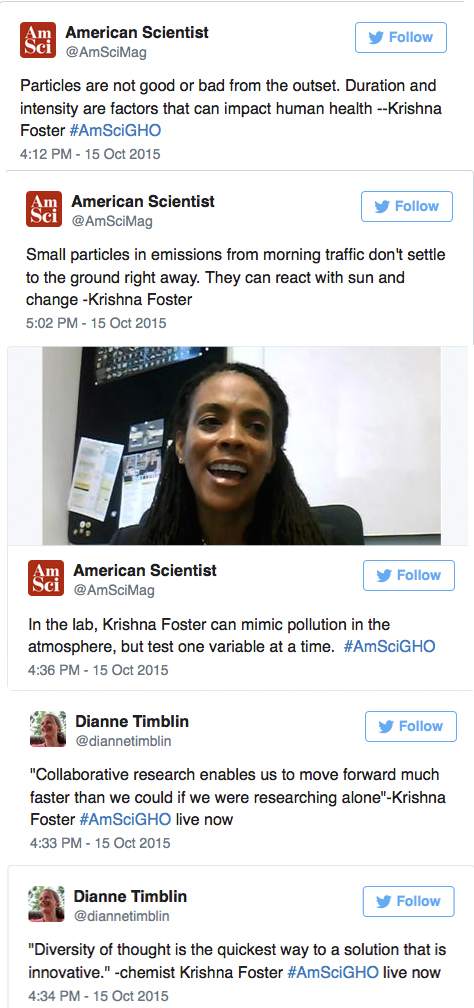Pollution Particles in the Air and How the Sun Changes Them
By Fenella Saunders
Dr. Kristna Foster describes the history of particle study in air quality, the chemistry that goes on in the atmosphere, and the effects it has on health.
October 16, 2015
From The Staff Chemistry Environment
If you've ever seen smog, you know how small particles in the air can cause pollution. But the atmosphere isn't static—the mix of particles, plus other sources of energy such as the Sun, can cause particles to react and change. Teasing out the pieces and stages in that complex puzzle is important for accurate climate modeling.
Dr. Krishna Foster, a professor of chemistry at California State University, Los Angeles, and one of Sigma Xi's Distinguished Lecturers, studies how sunlight alters these tiny atmospheric particles over time. In this Google Hangout, she describes the history of particle study in air quality, the chemistry that goes on in the atmosphere, and the effects it has on health.
Here are some tweeted excerpts of the discussion:

For more on the chemistry of hydrocarbons, especially rings of six carbons called benzene rings, see "The Many Guises of Aromaticity" by Roald Hoffmann.
For more on the complexity of climate modeling, see "Clarity in Climate Modeling" by Brian Hayes.

American Scientist Comments and Discussion
To discuss our articles or comment on them, please share them and tag American Scientist on social media platforms. Here are links to our profiles on Twitter, Facebook, and LinkedIn.
If we re-share your post, we will moderate comments/discussion following our comments policy.